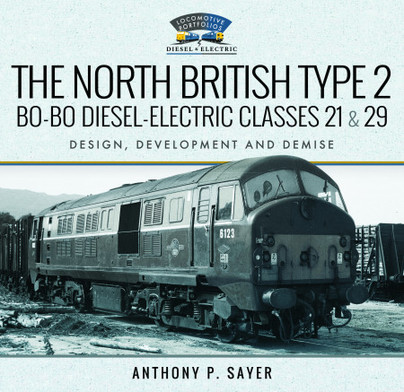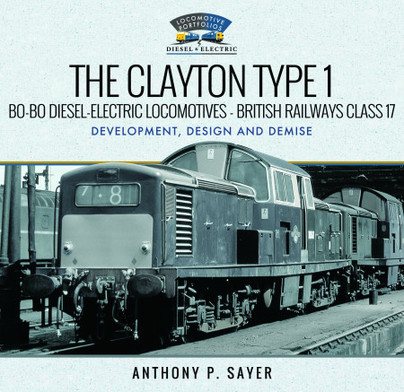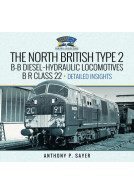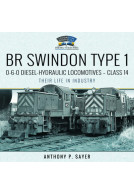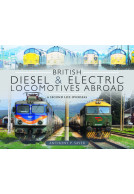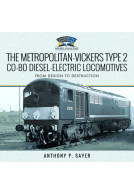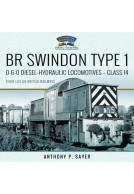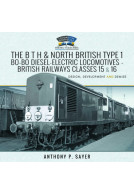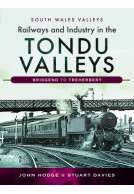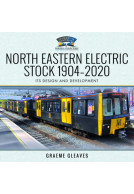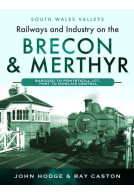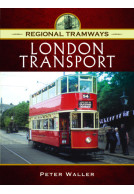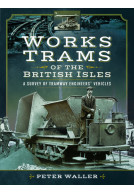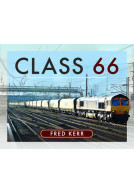The North British Type 2 Bo-Bo Diesel-Electric Classes 21 & 29 (Hardback)
Design, Development and Demise
Imprint: Pen & Sword Transport
Series: Locomotive Portfolios Diesel and Electric
Pages: 291
Illustrations: 170
ISBN: 9781526742773
Published: 9th September 2019
(click here for international delivery rates)
Order within the next 1 hour, 43 minutes to get your order processed the next working day!
Need a currency converter? Check XE.com for live rates
This book provides an in-depth history of the North British diesel-electric Type 2 locomotives which were constructed by the North British Locomotive Company in Glasgow during the late-1950s / early-1960s for use on the Eastern and Scottish Regions of British Railways.
"Despite efforts to improve their poor performance in traffic, by both engine refurbishment or complete replacement, these locomotives were all withdrawn from service by the end of 1971.
"Using significant quantities of previously unpublished material, dramatic new insights are revealed about both the original Class 21s and the rebuilt Class 29s, including detailed research into the whole rebuilding decision-making process, as well as providing fully dated information about works visits, periods in storage, detail difference modifications and livery changes.
"They are all well produced and feature a blend of textual information about the locomotives, diagrammatic drawings, a lavish collection of photographs and tabulated data... As for a recommendation, if the classes covered are of interest to you then these are quality books filling a niche market and worth buying."
John New, The Stephenson Locomotive Society Journal, March/April 2022
For the diesel historian and modeller, this is an extremely useful and informative study of a class that was sadly lost before the diesel preservation movement became established. Highly recommended.
The Railway magazine, February 2021
It is a mine of information for those interested in these much maligned locos that spent the vast majority of their short lives in Scotland.
Diesel and Electric Modellers United, Issue 92
This weighty tome is a very detailed study of the technical aspects of these little-known engines, and takes a thorough look at their workings, careers (one by one) and subsequent withdrawal. Backed up by a wealth of photographs in both black & white and colour this book will clearly be respected as being the authoritative account of these locomotives, and completes the story of a type that on reflection should probably have never been built.
Railway Modeller, May 2020
A detailed study to the millimeter on Classes 21 and 29.
Miniaturas JM
Read the full Spanish review here
Like the other books in the Locomotive Portfolio series, the book is a real encyclopedia of information about the Class 21s and 29s as none of this type of locomotive remains today in preservation.
Rail Advent
Read the full review here
Essential reading and study material for students of BR's early diesel locomotives.
Railway Correspondence and Travel Society
The rather sorry story is well-told throughout, though, at times, it makes somewhat depressing reading. That said, it will be of great use to modellers and historians alike. Recommended.
BRM, January 2020 – reviewed by Tony Wright
A very interesting book about these short-lived locomotives. It has 170 photographs and a wealth of information about them, both class 21 and class 29 (which is a reconstruction of Class 21). All this gives it great value as an encyclopedia of these passenger locomotives and goods from which unfortunately none has survived.
Unes Cuantos Trenes Blog, Jorge del Valle
Read the full Spanish review here
Ordered by the British Transport Commission as part of the 1955 B.R. ‘Modernisation Plan’ from N.B.L in Glasgow, these diesel-electric, MAN engined, Type 2 locomotives proved far from successful. However, with twenty of the class being re-engined with Paxman units theirs is an interesting story and told eloquently in this excellent book. Photos of each of the fifty eight members of the class are coupled with detailed descriptions and, where applicable, additional photos showing their change of appearance as a class 29. This book comprehensively covers all aspects of this short lived class, including livery details, re-build information and detail differences, making this book a must for the railway modeller, or those, like me, interested in the early ‘pre-tops’ B.R. diesel era and, because of the class 29 association with the area, anyone interested in the West Highland Line.
Amazon Customer Review
5 Stars.
About Anthony Sayer
ANTHONY SAYER is a life-long railway enthusiast with an interest in the history of the early British diesel and electric locomotive classes. This is the author’s sixth book in the “Locomotive Portfolio” series, following on from the North British Type 2 (Classes 21 & 29), the Metropolitan-Vickers Type 2 (Class 28), the Clayton Type 1 (Class 17), the BTH/NBL Type 1 (Classes 15 & 16) and BR Swindon Type 1 (Class 14: Their Life on British Railways) books published between 2019 and 2021. Anthony lives in the north-east of England and has now retired after 37 years in the steel industry with responsibilities in both transport planning and supply-chain logistics.
The ‘Claytons’ were originally conceived as the British Railways “standard” Type 1 diesel-electric locomotive, superseding other Type 1 classes delivered as part of the ‘Pilot Scheme’ fleet. The early classes suffered from poor driver visibility, and the plan from 1962 was for subsequent trip-freight and local yard shunting locomotives to be centre-cab machines with low bonnets to dramatically improve visibility. To this extent the Claytons were highly successful and popular with operating crews. However, the largely untested high-speed, flat Paxman engines proved to be highly problematical,…
By Anthony SayerClick here to buy both titles for £80.00







